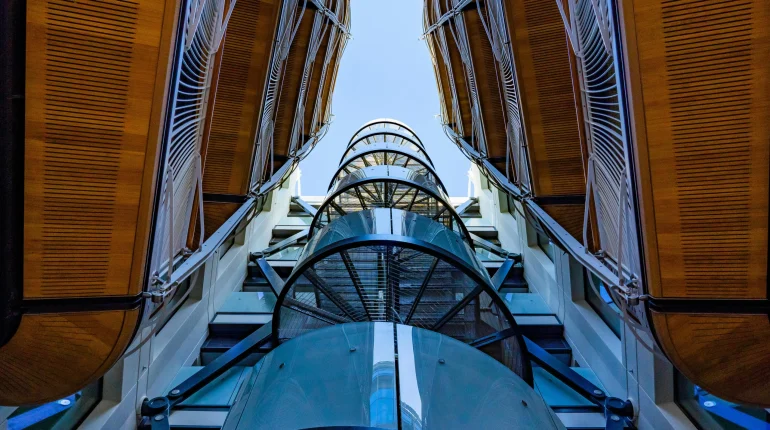
The 179D tax deduction for energy-efficient buildings underwent a transformation beginning in tax year 2023. Two years later, those changes are worth more than ever before. For owners of commercial property who achieve energy use reductions on newly built or renovated buildings, and the architects and engineers who are primarily responsible for the design of those upgrades, the federal government offers a substantial tax reward.
The law was expanded for 2023 to include tax-exempt organizations, Indian tribes and real estate investment trusts (REITs). How does a tax-exempt organization earn a tax deduction? By allocating the deduction to the property’s designer, which can dramatically reduce the cost of the development.
What is Eligible for the 179D Deduction?
To be eligible, the building or renovation must slash energy use by at least 25%, with additional deductions for every percentage point of energy savings up to 50%. Additionally, property owners and designers can earn bonus deductions for paying prevailing wages on the project.
The standard of measure for these power use reductions was changed starting in 2023 and depends on the type of upgrades. For renovations, previous energy use is the benchmark. For new construction, it is ASHRAE Standard 90.1, a benchmark for commercial building energy codes in the U.S. developed by the American Society of Heating, Refrigerating and Air-Conditioning Engineers (ASHRAE) and the Illuminating Engineering Society of North America.
A third-party licensed engineer must determine the energy savings for a Section 179D claim. National Tax Group’s licensed engineers and tax specialists have helped hundreds of companies reduce their tax liabilities by millions of dollars by validating their sustainability upgrades and submitting claims for the deduction.
How Much the 179D Deduction is Worth?
The most significant update to the law was the value of the deduction, which has increased each year since. For 2025, the base deduction increases to $0.58 per square foot for buildings that slash their power costs by 25%, and increases $0.02 per square foot for each percentage point over 25% up to $1.16 per square foot at 50%.
For businesses that meet prevailing wage and apprenticeship requirements, the deduction starts at $2.90 per square foot, increasing $0.12 per square foot for every percentage point over 25% up to $5.65 per square foot.
This provides a powerful incentive to generate and use electricity sustainably while supporting workforce development. At the maximum deduction, a 20,000-square-foot office building, warehouse, school, hospital, retail outlet or multi-family residential building would fetch a six-figure tax deduction. For comparison, the average Walmart checks in at 106,000 square feet.
One other change in the law encourages periodic updates to the original re-design. Under the law as previously written, the lifetime deduction for any building was capped.
Now, any given year’s deduction is reduced by the amount of the deduction taken in the three previous years. Because the deduction resets, property owners are incentivized to undertake new green building upgrades every fourth year.
Solar Power and 179D
Going green has other advantages beyond a tax write-off. To earn the deduction, property owners must first reduce their power bill. Sustainable building is also good for the environment, which helps attract environmentally conscious employees and customers. Property owners and designers can earn the power savings by improving interior (not exterior) lighting systems; HVAC and hot water systems; and the entire building envelope, which includes doors, windows, roof, insulation and other building materials used in the skin of the building.
Solar panel installations are a big component in energy use reduction and benefit particularly from Section 179D because they require a large upfront investment and pay off slowly over the life of the panels. The deduction can offset a big part of that cost, because solar alone can easily slash power usage by 50%.
To meet the prevailing wage standards for the 179D deduction, laborers, contractors and subcontractors must be paid wages that meet or exceed the prevailing wage for the job types in the given local area, as determined by the U.S. Department of Labor.
These rules are complex and ever-shifting, and invite IRS audits. Applying for the 179D tax deduction requires partnering with an experienced partner to provide the expertise necessary to withstand an audit. National Tax Group’s engineering studies have a 100% track record of holding up under IRS scrutiny. Contact NTG today for a free, no-obligation discussion about how 179D can benefit your company.
Recent Posts
Categories
- 179D (19)
- 179D (29)
- 45L (3)
- Archive (9)
- Case Studies (46)
- Cost Segregation (5)
- Cost Segregation (15)
- CPACE (6)
- ERC (4)
- Event (9)
- News & Blog (82)
- R&D (22)
- R&D (23)
- SBA 504 (6)
- Tax News & Updates (16)